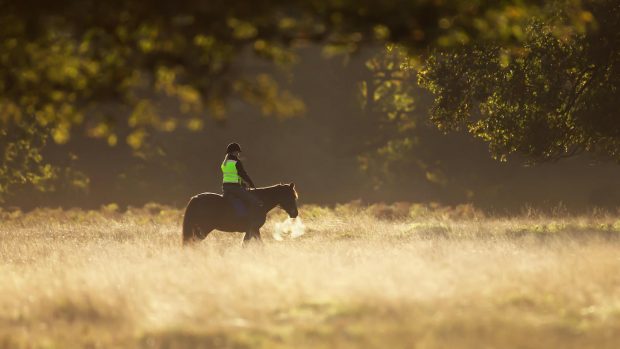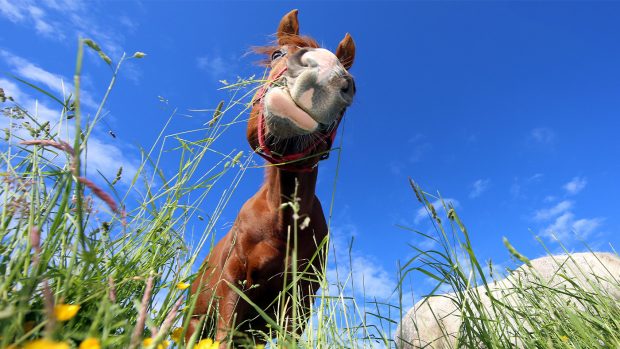More articles on feeding for competition
Find a horse feed supplier near you
Q: I have a 13-year-old warmblood-thoroughbred gelding whom I show jump and event. He has a tense attitude to work, can be very strong and “works” his weight off quickly. A low-sugar diet helps him, but I then struggle to keep his weight on.
He is coming back into work from a three-month rest after injury. I have struggled to keep him up to scratch during this period and have been going through at least six bales of hay a week.
Now he is out grazing he has put on some weight, but I worry that this will disappear when he’s back in work. He is quirky and finds change stressful.
He is on Happy Hoof for the starch levels and Speedibeet. He is turned out seven hours a day and gets a full haynet at night. Can I keep him in top condition without hitting the danger levels?
Lisa Wray, Herts
As part of the H&H/Dodson & Horrell Feed to Win campaign, we asked D&H nutritionist Teresa Hollands to offer Lisa some advice.
“Keeping a competition horse in top condition requires a balance of calories, protein and nutrients,” said Teresa. “If your horse is struggling to keep weight on — low fat score — then you need to feed him more calories, which come from everything we feed our horses including hay, grass and hard feed.
“Until recently you have been feeding low-calorie feeds, however grass is higher in calories than both hay and Happy Hoof and this is why he’s increased in weight recently. But, as you rightly point out, even grass doesn’t give him enough calories as you increase his work.
“A fit eventer will have a lean, muscular outline with little or no fat, making them look leaner than when they were carrying more fat and less muscle,” she explained. “A leisure horse with little or no fat will look weak as they have proportionally less muscle.”
Teresa said that eating six bales of hay a week is a useful indicator of your horse’s appetite.
“Assuming a bale weighs 25kg and he weighs 600kg then he has been eating 3.5 per cent of his bodyweight compared with the 2.5 per cent quoted in books,” said Teresa. “But don’t worry. Recent research we undertook with [charity] World Horse Welfare showed that horses can eat seven per cent of their bodyweight in grass. As he doesn’t keep weight on well, it is important he can eat enough calories.
“Horses eat 16-18hrs out of 24, so seven hours at grass represents 38-43 per cent of his eating time. He could be eating 7-9kg of grass [1.1-1.5 per cent of his bodyweight] in this time, providing him with between 1kg [150g sugar x 7kg grass] and 1.8kg of sugar [200g sugar x 9kg grass].
“I suggest you give him a minimum of 10kg of hay at night [nearly half a bale] and, as his workload increases and his calorie requirement goes up, introduce Staypower Cubes. This is a competition feed formulated to provide controlled energy from slow-release ingredients which are high in fibre and oil. If he is picky and you prefer a mix, try Staypower Muesli. A leisure feed that is high in fibre won’t contain enough calories.
“There is some anecdotal evidence that horses who are ‘tense’ have additional requirements for magnesium and B vitamins,” said Teresa. “Many riders have found that adding Take Control to feed two to four weeks before competitions can be helpful. Take Control is designed to replace a proportion of his current feed and therefore is not an add-on cost. He will need 600g per day, so decrease his Staypower by the same amount.”
Information
Dodson & Horrell, tel: 08453 452627 www.dodsonandhorrell.com
This Q&A was first published in Horse & Hound (28 May, ’09)
Want to read more articles on feeding for competition?
Looking for a horse feed supplier near you?




